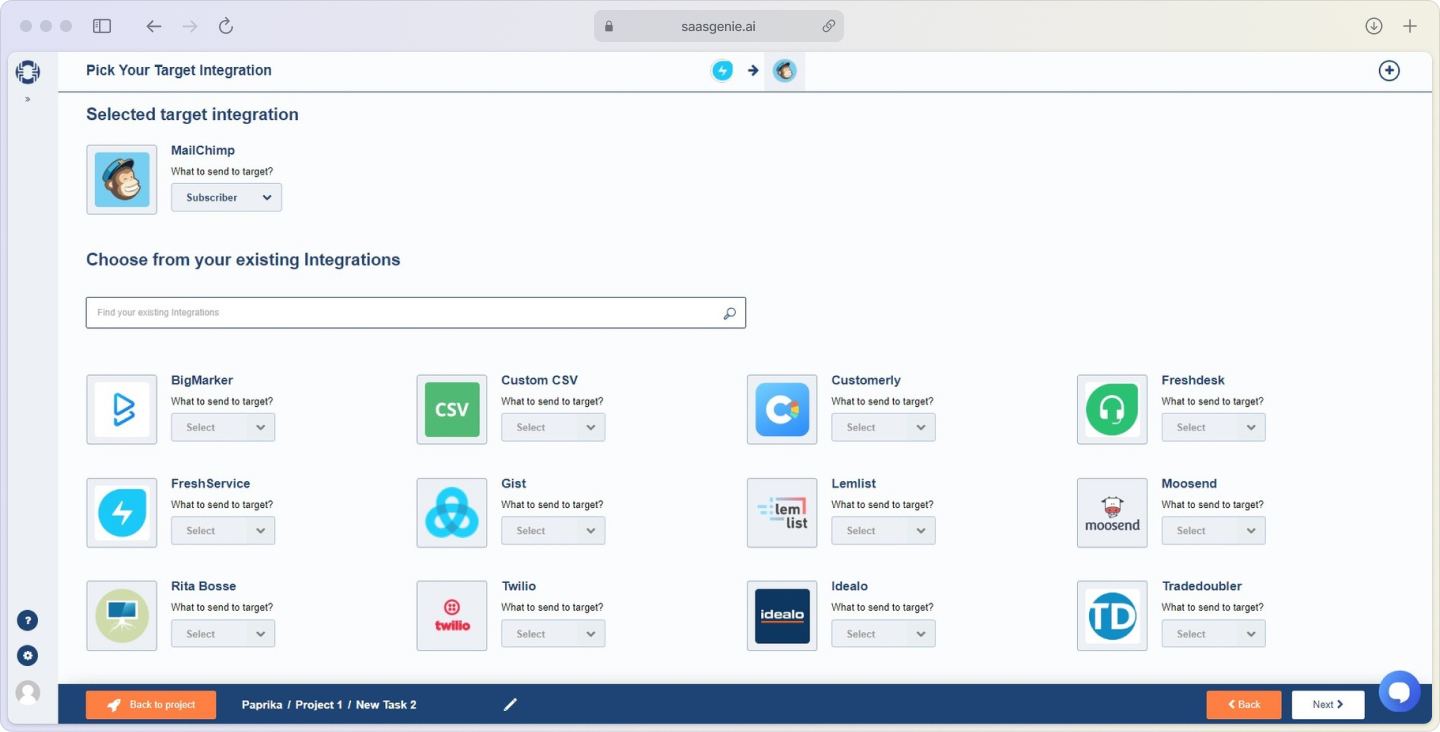Freshservice vs ServiceNow: Modern ITSM Tool Comparison
Freshservice and ServiceNow are both IT Service Management (ITSM) platforms that help organizations track and resolve IT issues, manage assets, and automate regular processes. People often consider these platforms when looking to improve how they handle technology problems, service requests, and workflows.
Each platform serves the same overall purpose but offers different approaches and capabilities. This comparison breaks down the key differences to help you understand which might work better for your situation.
Ever feel like choosing between ITSM tools is like picking a superhero team?

One promises enterprise-grade powers but might need a PhD to operate, while the other swears it can save the day without the complexity headache.
Let us walk you through what makes each platform tick, and more importantly, which one might actually stick around long enough to become your IT operations sidekick.
But before we go ahead, if you want the deep-dive numbers, don’t miss our free ebook comparing ROI, implementation costs, and value for Freshservice vs. ServiceNow. (Perfect for building your business case or proving the point to finance!)
Freshservice vs ServiceNow at a glance
The global ITSM (IT Service Management) market was valued at USD 13,456.7 million (≈ USD 13.46 billion) in 2024, and is projected to reach USD 29,927.0 million (≈ USD 29.93 billion) by 2030, growing at a CAGR of 14.4%. (Grand View Research)
Freshservice focuses on straightforward implementation and user-friendly design. Most teams can get it running within weeks rather than months. It works well for organizations that want structured IT service management without extensive customization or complex setup processes.
ServiceNow is built for large-scale environments with complex requirements. It offers deep customization options and can handle intricate workflows across multiple departments. However, it typically requires longer implementation timelines and more technical expertise to manage effectively.
Just keep in mind the extra power comes with extra moving parts; its UI and setup can feel heavyweight compared with Freshservice’s plug-and-play approach. (That ‘no-code needed’ promise is what many admins fall in love with.)
Here's how they stack up on core features:

Quick takeaways:
Freshservice strengths: Faster deployment, easier adoption, mid-market pricing
ServiceNow strengths: Enterprise scale, deep customization, comprehensive platform capabilities
Who each platform serves best
The right ITSM platform depends heavily on your organization's size, complexity, and timeline expectations.

Mid-market teams (500-1000 employees) often find Freshservice hits the sweet spot. You get professional incident management, asset tracking, and automation without needing a dedicated ServiceNow administrator or months of configuration work.
Large enterprises and government organizations choose Freshservice when they need:
Multi-department service management beyond IT (HR, Facilities, Legal, Finance) with governed catalogs and role-based access
Complex approval workflows and auditable controls across global teams, without heavyweight admin overhead
Extensive integration with existing enterprise systems via native connectors and robust APIs (e.g., Entra ID/AD, Okta, SAP, Workday, Jira, AWS/Azure)
Advanced, executive-ready reporting across business units with customizable dashboards and KPIs
On G2, users rate Freshservice higher for ease of use (9.2) compared to ServiceNow ITSM (8.5).
Enterprise Service Management (ESM) extends ITSM practices to non-IT departments like HR, facilities, and legal, with the ESM market projected to reach USD 12.8 billion by the end of 2025. Freshservice delivers enterprise-grade ESM with multi-portal experiences, departmental workspaces, and orchestration that spans teams, accelerating rollout and adoption while preserving scale and governance. ServiceNow also offers broad cross-enterprise modules; teams typically weigh Freshservice for speed-to-value and lower complexity versus ServiceNow for highly bespoke, federated operating models.
Comparing core ITSM capabilities

Incident and request management
Both platforms handle the basics well, ticket creation, routing, SLA tracking, and resolution workflows. The differences show up in complexity and customization options and extend naturally into problem management. Freshservice supplies ready-made problem templates, while ServiceNow lets you stitch problem, change, and incident data into fully custom analytics dashboards.
Freshservice uses simple automation rules to route tickets based on keywords, requester location, or urgency. SLA timers are built-in and easy to configure. The interface prioritizes clarity, with guided workflows that help agents resolve issues faster.
ServiceNow offers more granular control over ticket routing and workflow design. You can create complex business rules, custom fields, and multi-stage approval processes. This flexibility comes with added complexity in setup and maintenance.
.webp)
Change and release management

Change management helps teams plan, approve, and track system updates safely.
Freshservice provides templated workflows for common change types like software updates or hardware replacements. Risk assessment and approval steps are streamlined, making it easier to follow consistent processes without extensive training.
ServiceNow allows detailed customization of change workflows, including complex approval chains, automated risk calculations, and integration with external systems. This works well for organizations with strict regulatory requirements or complex IT environments.
Asset management and CMDB
One broader industry insight: many organizations still struggle with CMDB/knowledge management maturity. For example, 80% say their knowledge management capabilities “need improvement. (InvGate Blog)
A Configuration Management Database (CMDB) tracks all IT assets and their relationships, like which applications run on which servers, though only 25% of organizations get meaningful value from their CMDB investments.
Freshservice includes automated discovery tools that find and catalog assets on your network. The CMDB shows asset relationships clearly, making it easier to understand how changes might affect other systems.
ServiceNow offers more sophisticated asset management with detailed dependency mapping, custom asset types, and integration with financial systems for cost tracking. It handles larger, more complex environments better but requires more setup work.
Even among firms with ITSM in place, ~61% feel their service request workflows aren’t mature yet. These gaps highlight the importance of selecting a platform whose CMD /asset tools scale with the organization. (InvGate Blog)
Self-service portal and knowledge base
Self-service portals let employees find answers and submit requests without contacting IT directly.
Freshservice provides a clean, searchable portal with request forms and knowledge articles. The focus is on simplicity; employees can quickly find what they need or submit tickets without confusion.
ServiceNow supports more advanced portal customization, including dynamic forms, chatbots, and personalized content based on user roles. This flexibility is useful for organizations serving diverse user groups with different needs.
Because robust self-service and knowledge base usage reduce reliance on tickets, organizations see downstream benefits. For example, effective ITSM deployments can cut downtime by ~30% and IT costs by ~20%. (rezolve.ai)
Pricing and total cost considerations
Both platforms use per-user subscription pricing with different tiers that unlock additional features.

Freshservice typically offers more flexible pricing with monthly billing options and lower entry-level costs. Most teams start around $29–$109 per user per month, depending on tier and features. Implementation costs are usually lower due to faster setup times and less need for specialized consultants.
ServiceNow generally requires annual contracts with higher minimum user commitments, and its pricing is often custom-quoted but frequently starts at $100+ per user per month for core ITSM modules. Implementation costs can be high, especially for organizations requiring extensive customization or integration work.
Hidden costs to consider:
Implementation services: Configuration, data migration, training
Ongoing administration: System maintenance, updates, and user management
Add-on modules: Advanced analytics, additional integrations
Training: User adoption and administrator certification programs
Want a deeper dive on cost savings, payback period, and value?
AI and automation features
Gartner states that in 2023, ~60% of companies were already using AI-based ITSM tools for service desk operations. (rezolve.ai)
Modern ITSM platforms use artificial intelligence to reduce manual work and improve service quality, with AI-driven automation reducing incident resolution times by up to 50%.
Freshservice includes Freddy AI, which can categorize tickets, suggest solutions from the knowledge base, and automate routine tasks like password resets. The AI features work out of the box without requiring extensive setup or training.
ServiceNow offers more advanced AI capabilities, including predictive analytics, natural language processing for complex requests, and machine learning that adapts to your specific environment over time. These features typically require more configuration and ongoing tuning.
Automation capabilities include:
Workflow builders: Visual tools for creating automated processes
Smart routing: AI-powered ticket assignment to the right teams
Predictive insights: Early warning systems for potential issues
Virtual agents: Chatbots that handle common requests automatically
Integration and ecosystem
Both platforms connect with popular business tools, but with different approaches and depth.

Freshservice provides native connectors for Microsoft Teams, Slack, Google Workspace, and Active Directory. The REST API allows custom integrations, and the marketplace offers pre-built apps for common business tools.
ServiceNow supports extensive integrations through its robust API framework and large partner ecosystem. It connects deeply with enterprise systems like SAP, Salesforce, and various monitoring tools. The ServiceNow Store offers thousands of certified applications.
Popular integration categories:
Communication tools: Teams, Slack for chat-based ticketing
Development platforms:Jira, GitHub for IT and engineering alignment
Cloud services: AWS, Azure for automated discovery
Identity systems: Active Directory, Okta for user lifecycle management
Freshservice supports under ~20 native app integrations (by ServiceNow’s own comparison), meaning its pre-built connectors are more limited. (ServiceNow)
Security and compliance
Both platforms meet enterprise security standards, with some differences in depth and certification coverage.
Common security features:
Data encryption: In transit and at rest
Role-based access control: Granular permission management
Audit logging: Complete activity tracking
Single sign-on: Integration with identity providers
Compliance certifications:
SOC 2 Type II: Both platforms certified
ISO 27001: International security management standards
GDPR compliance: Tools and documentation for data protection
ServiceNow offers additional certifications like FedRAMP for government work and more extensive compliance documentation for regulated industries.
Implementation timeline and effort
Need a quick win? Expect weeks with Freshservice versus months with ServiceNow, then dive into the specifics below.
Freshservice typically takes 4-16 weeks to deploy typically takes 4-16 weeks to deploy with standard configurations. Most organizations can handle basic setup internally, though many choose to work with certified partners for faster results and best practices.
ServiceNow implementations usually range from 3-6 months for standard deployments. Complex customizations or extensive integrations can extend timelines further. Most organizations require external consultants or dedicated internal resources.
Success factors for faster deployment:
Clear requirements: Document current processes and desired improvements
Clean data: Prepare asset inventories and user lists before migration
Change management: Plan user training and adoption strategies early
Phased approach: Start with core features, add complexity gradually
Nearly 24% of organizations plan to replace their ITSM tools; implementation decisions are not trivial, and many teams underestimate migration complexity or future scalability risks. Also, only about 48% of organizations consider their ITSM capabilities ‘good’ or ‘great,’ reinforcing that successful adoption is as much about culture and execution as features. (InvGate Blog)
Making the right choice for your organization
Only ~20% of organizations have already adopted parts of ITIL 4 (with ~32.5% planning to) today; your choice of ITSM tool should also account for the capability to grow with evolving best practices. A tool that’s easy to get started on (Freshservice) but has upgrade paths, or one that’s enterprise-ready from the start (ServiceNow), must align with your maturity roadmap.
While some industry sources suggest IT operations tools are seeing triple-digit growth (~7% annually), that’s more reflective of compounding adoption from low baselines rather than sustainable expansion. Still, it underscores the urgency of picking tools that can scale without constant retooling. (ITSM.tools, & LLCBuddy)
The decision often comes down to balancing capability needs with implementation complexity and cost.
Choose Freshservice when:
You want faster time-to-value with lower implementation risk
Your team prefers intuitive interfaces over extensive customization
Budget considerations favor a lower total cost of ownership
You need solid ITSM capabilities without enterprise-level complexity
Choose ServiceNow when:
You require extensive customization for complex business processes
Multiple departments will use the platform beyond IT
Regulatory compliance demands detailed audit trails and controls
You have resources for longer implementation and ongoing administration
Getting expert help with your ITSM selection
Choosing between ITSM platforms involves more than comparing feature lists. The right choice depends on your specific requirements, existing systems, and organizational goals. when evaluating ITSM platforms.

saasgenie specializes in helping organizations evaluate, implement, and optimize Freshworks solutions, including Freshservice. As certified Freshworks partners, we've guided teams through successful ITSM deployments that deliver measurable improvements in service quality and operational efficiency.
Our approach focuses on understanding your current challenges and mapping them to the right solution, whether that's Freshservice, ServiceNow, or another platform entirely. We provide honest assessments based on your actual needs, not vendor preferences.

CUSTOMER STORIES
"The transition to Freshservice was completed smoothly, and the platformis now fully operational. We appreciate the hard work and dedication from yourteam throughout this implementation process. Your support has been invaluablein ensuring a seamless transition."
.webp)


